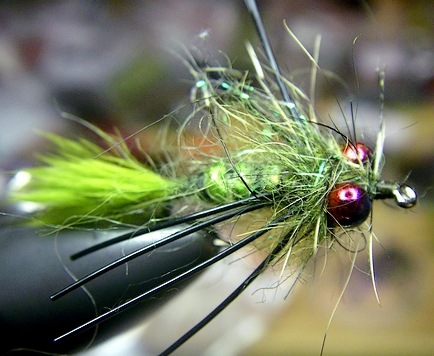I’ve had the luxury of testing a Redington RS4 9′ #6 the last couple of weeks, complimented by a matching Redington Rise 5/6 reel. I managed to paint some algae on it from a half dozen tepid backwaters, including the Little Stinking and Sporting Creek.

Now with the rod shiny and scrubbed with anti-invasive bleach, I’ll have to return it.
… but not before passing on some commentary.
Action:
“Crisp” covers the first two sections, and immovable describes the last two. It’s a six weight rod in name only – as the rear half is nearly inflexible. It casts a WF7F with equal ease, and a WF8 doesn’t even flex the third segment.
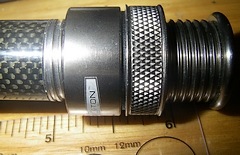 Fast action rods have the bulk of the flex contained in the top third or top half of the blank, but the RS4 is an extreme case typified by a club-like lower half. All rods should demonstrate some flex regardless of action type, and the RS4 was much too stiff in the lower two sections to see real deflection. As a result, it delivers the line with great authority, too much for delicate work – it’s bestial characteristic better suited for slamming deer hair bass bugs or waterlogged streamers into a stiff breeze.
Fast action rods have the bulk of the flex contained in the top third or top half of the blank, but the RS4 is an extreme case typified by a club-like lower half. All rods should demonstrate some flex regardless of action type, and the RS4 was much too stiff in the lower two sections to see real deflection. As a result, it delivers the line with great authority, too much for delicate work – it’s bestial characteristic better suited for slamming deer hair bass bugs or waterlogged streamers into a stiff breeze.
Which was ideal for the creeks I subjected it to …
Bead head nymphs hit the water with terrific force – a reminder to back off the delivery stroke for fear of the ensuing fountain of water and suddenly empty creek …
Outfitted with a ST7S it can deliver a bead chain enhanced shad fly in excess of 110 feet, yet I still couldn’t confirm whether the third section was participating in all that double hauling frenzy.
I like fast, but this taper ended after the top half – yielding a wading staff from the bottom two segments.
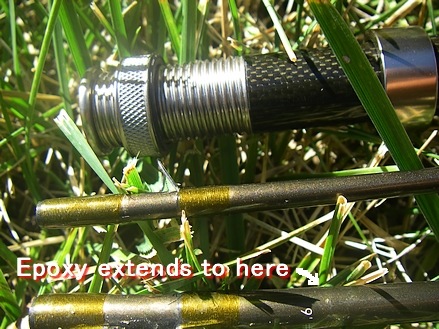
Spline Test:
Peering under the hood reveals the engineering detail of rod construction, and I was disappointed in the results of the spline test.
Simply put, a graphite rod is built by wrapping a fixed length of graphite scrim (fabric) onto a steel mandrel. When the appropriate number of layers are applied, the material is trimmed lengthwise, wrapped and baked into the final blank.
The start of the wraps and the end of the wrap create two points with an extra layer of graphite compared to the rest of the blank – these are called the major and minor spline(s).
The major spline is typically the outside wrap – the last wind of fabric before it was cut, and the minor spline is the first wrap of fabric – but it’s buried deep in the blank so it appears less pronounced.
Laying a rod section onto a flat table, you can roll the edge of your hand in the middle of the rod to feel both splines – the rod actually “jumps” in your hand as the two “edges” of extra material roll underneath.
All wrapped fabric rods have this phenomenon, both fiberglass and graphite, bamboo rods usually lack a spline, as they’re constructed of (usually) six hexagonal strips glued together, therefore lacking any “extra” turns of material.
Guides are traditionally mounted opposite the major spline. This makes the “top” of the rod contain the spline, and as it’s the stiffest section of the rod, and the “outside” of a rod bends further than the inside when flexed, it’s the side with the most resistance to bending.
It provides power.
Cheap mass produced rods pay no attention to spline alignment, mounting the guides wherever they feel like – or however the rod segment lands in the wrapping harness. First tier rod makers typically align the spline and guides to ensure a predictable action.
Redington’s guides are mounted without regard to the spline of each rod segment, and each of the four sections has the guides mounted in a different angle to the spline.
When casting the rod you’d be hard pressed to feel the difference of spline alignment and guides. Mechanically, the rod is reacting differently on each segment and is twisting to compensate for the poor alignment robbing the casting stroke of energy.
A fast action #6 with reserve power – mounted properly with the spline of all four sections on the top, would make this rod a true #7, as the spline adds additional reserve power and resistance to flexing.
Finish and Fittings:
Black finished dual foot guides complemented by a single carbide stripping guide, offered a traditional look and feel. Sturdy reel seat hardware accented with the neo-standard graphite spacer – and a nice broad rounded thread to tighten the reel seat. The wide thread resists grit from causing the reel to bind on dismount – a nice “fishing” touch – as we excel at putting reels in harsh environments.
Outstanding cork with little filler – a rarity in today’s rods. eight 3/4″ rings used versus the traditional thirteen 1/2″ cork segments.
The finish was applied thickly, with all decals imbedded under a blanket of epoxy. Small dots marked on the blank for guide alignment got additional coats – and the male end of each ferrule has epoxy extending down the blank for an additional two inches, a bit of overkill considering.
This “decal” coat was abrupt and noticeable on each rod segment, almost giving the notion of a sag in the finish. It’ll be a “”turn off” to those that delight in a rod’s appearance – and assists in stiffening an already unyielding rod.
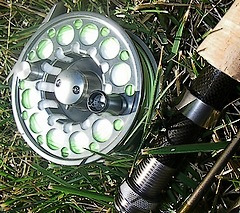
Reel:
The Rise reel was absolutely delightful. Solid construction and good craftsmanship on both tolerances and finish. The drag knob was large and accessible and turned easily even with muddy or damp fingers.
It’s a mid arbor reel with both sides ventilated for weight reduction.
The holes on the rear of the reel are small preventing dangling vest attachments from getting into the mechanism once the reel is brought into your chest, and the backplane thick enough to avoid the “cheese grater” effect should a finger get into the wrong area on a hot fish.
Disc drag with easy access for lubrication and maintenance, and a pleasing muted click to alert you to line paying out.
Suggested retail is $156.00 (Spool $80).
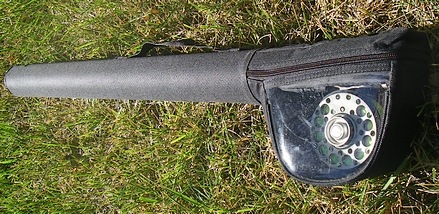
Case:
It’s a clever case design allowing for the reel to stay attached when stored away. It makes for one less item to forget in pre-trip planning – as the mylar window plainly displays the reel attached to the rod.
Summary:
This is a clubby workhorse rod – not some gossamer reed that will assist your posing in the parking lot. Fit and finish are acceptable, with the notable exceptions of superb reel seat and quality cork, but finish and engineering (spline mismatch) are not Tier 1 quality.
Considering that I fish with rods whose trim is painted on the blank, that shouldn’t give you much pause ..
It’s a beastial fast rod whose action is limited to the first two segments, the butt sections are inflexible and clubby. You’ll treat the rod accordingly – no wincing when you yank a stuck dry fly from an overhanging branch, it’s the kind of rod you loan an in-law without regard for its safety, whose butt is perched in sand and water while wolfing a sandwich.
You’ll toss it into the truck bed fully rigged, and if it bangs the bottom of the boat when you shift your weight, you won’t worry about any nick or blemish.
Crisp action bordering on the insensitive, quality accessories yet only average finish quality, it’s a yeoman’s rod – something to learn with and loan to a friend once you upgrade.
TC’s test of the same rod offers additional insight.
Tags: Redington RS4 Review, Redington rod, Redington Rise 5/6, fly rod, fly reel, cork, round threaded reel seat, scrim, epoxy finish, rod spline, mass produced fly rods, Chinese fly rod

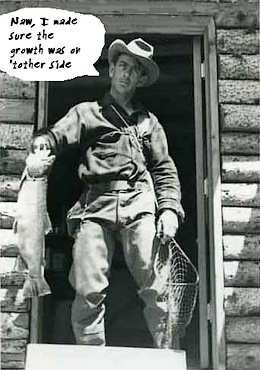 … and year’s later you’re sitting on the side of the bed wearing an antiseptic paper gown – both cheeks exposed (and chilling rapidly), modesty hanging on a strained overhand knot. The doctor pages through your chart, making noises that sound like you screwed up, and turns to you suggesting, “you’ve less than six months to live unless your medical insurer
… and year’s later you’re sitting on the side of the bed wearing an antiseptic paper gown – both cheeks exposed (and chilling rapidly), modesty hanging on a strained overhand knot. The doctor pages through your chart, making noises that sound like you screwed up, and turns to you suggesting, “you’ve less than six months to live unless your medical insurer 
 Fast action rods have the bulk of the flex contained in the top third or top half of the blank, but the RS4 is an extreme case typified by a club-like lower half. All rods should demonstrate some flex regardless of action type, and the RS4 was much too stiff in the lower two sections to see real deflection. As a result, it delivers the line with great authority, too much for delicate work – it’s bestial characteristic better suited for slamming deer hair bass bugs or waterlogged streamers into a stiff breeze.
Fast action rods have the bulk of the flex contained in the top third or top half of the blank, but the RS4 is an extreme case typified by a club-like lower half. All rods should demonstrate some flex regardless of action type, and the RS4 was much too stiff in the lower two sections to see real deflection. As a result, it delivers the line with great authority, too much for delicate work – it’s bestial characteristic better suited for slamming deer hair bass bugs or waterlogged streamers into a stiff breeze.


 With so few publicly traded companies containing an angling footprint, and with fishermen a closed mouth lot its always been a struggle to get a feel for the angling economy …
With so few publicly traded companies containing an angling footprint, and with fishermen a closed mouth lot its always been a struggle to get a feel for the angling economy … Few items are as indispensable to fishermen as duct tape, but it too may have succumbed to advanced helical technology and high modulus with the debut of Rescue Tape.
Few items are as indispensable to fishermen as duct tape, but it too may have succumbed to advanced helical technology and high modulus with the debut of Rescue Tape. I hadn’t thought about it much until I started catching Smallmouth bass with regularity. Trout and saltwater fish shared a similar resigned expression when handled; dull and lifeless – as if garnished with lemon was better than cavorting with mayflies or seaweed.
I hadn’t thought about it much until I started catching Smallmouth bass with regularity. Trout and saltwater fish shared a similar resigned expression when handled; dull and lifeless – as if garnished with lemon was better than cavorting with mayflies or seaweed.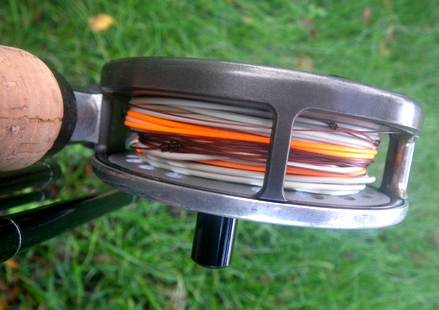
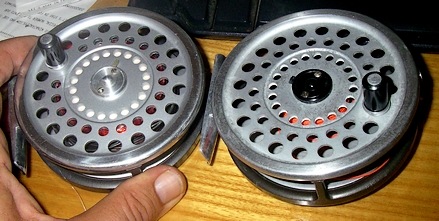
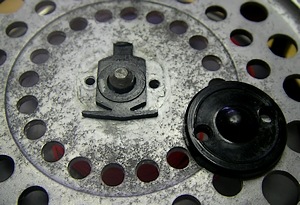
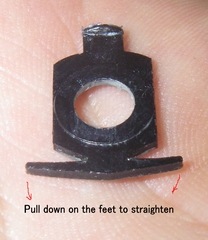 It’s a bad design, plastic just doesn’t have the longevity, and fatigues much quicker than the surrounding metal.
It’s a bad design, plastic just doesn’t have the longevity, and fatigues much quicker than the surrounding metal.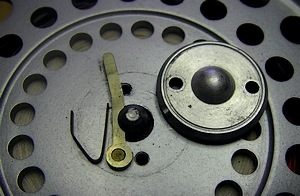
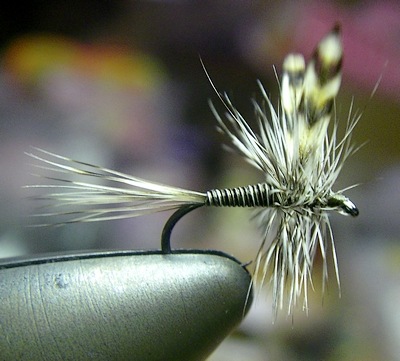
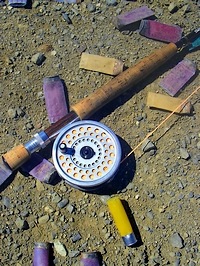 Doctor Mom would’ve given me a good scolding, the Evil Eye, and an increased ration of Chicken soup.
Doctor Mom would’ve given me a good scolding, the Evil Eye, and an increased ration of Chicken soup.
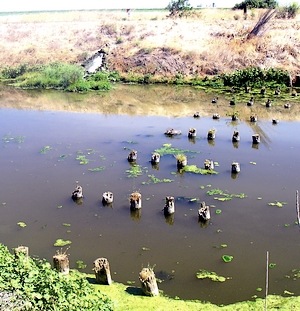 It’d be gracious to call it “stained with tannin” but the abundant alfalfa fields, herds of sheep and corn, made it more muck-coffee colored; bigger than I’d anticipated and with a lot of miles available for exploration.
It’d be gracious to call it “stained with tannin” but the abundant alfalfa fields, herds of sheep and corn, made it more muck-coffee colored; bigger than I’d anticipated and with a lot of miles available for exploration.